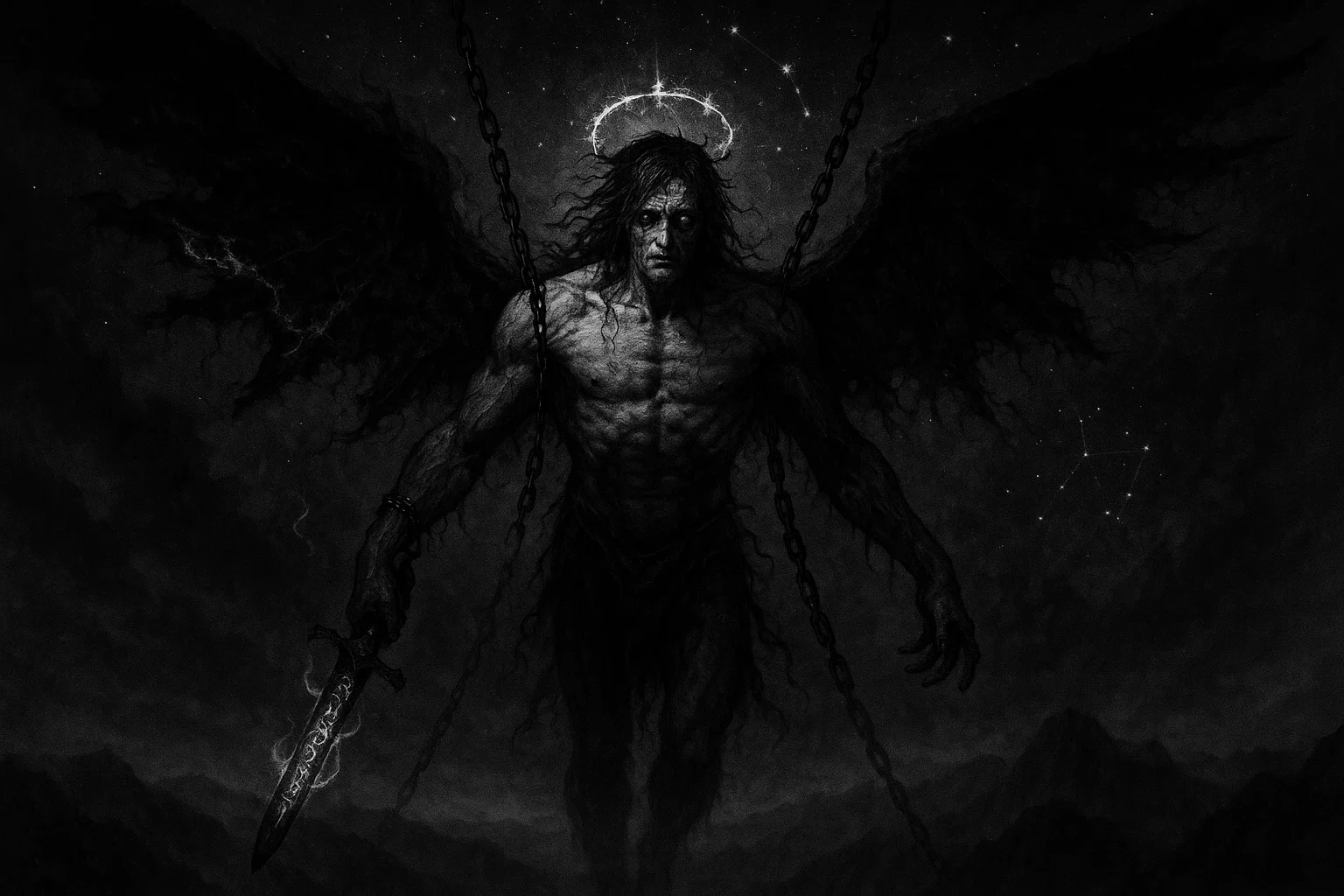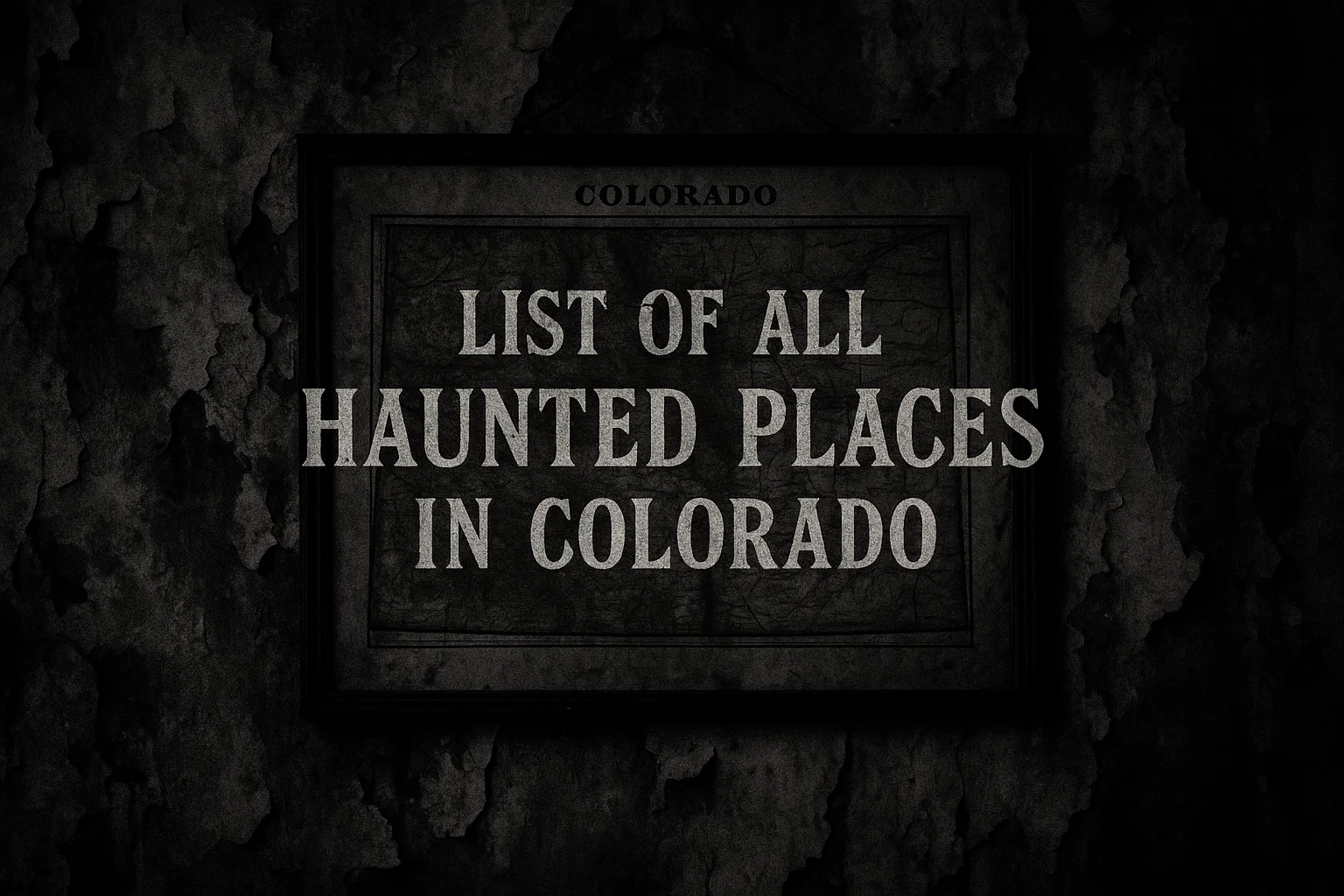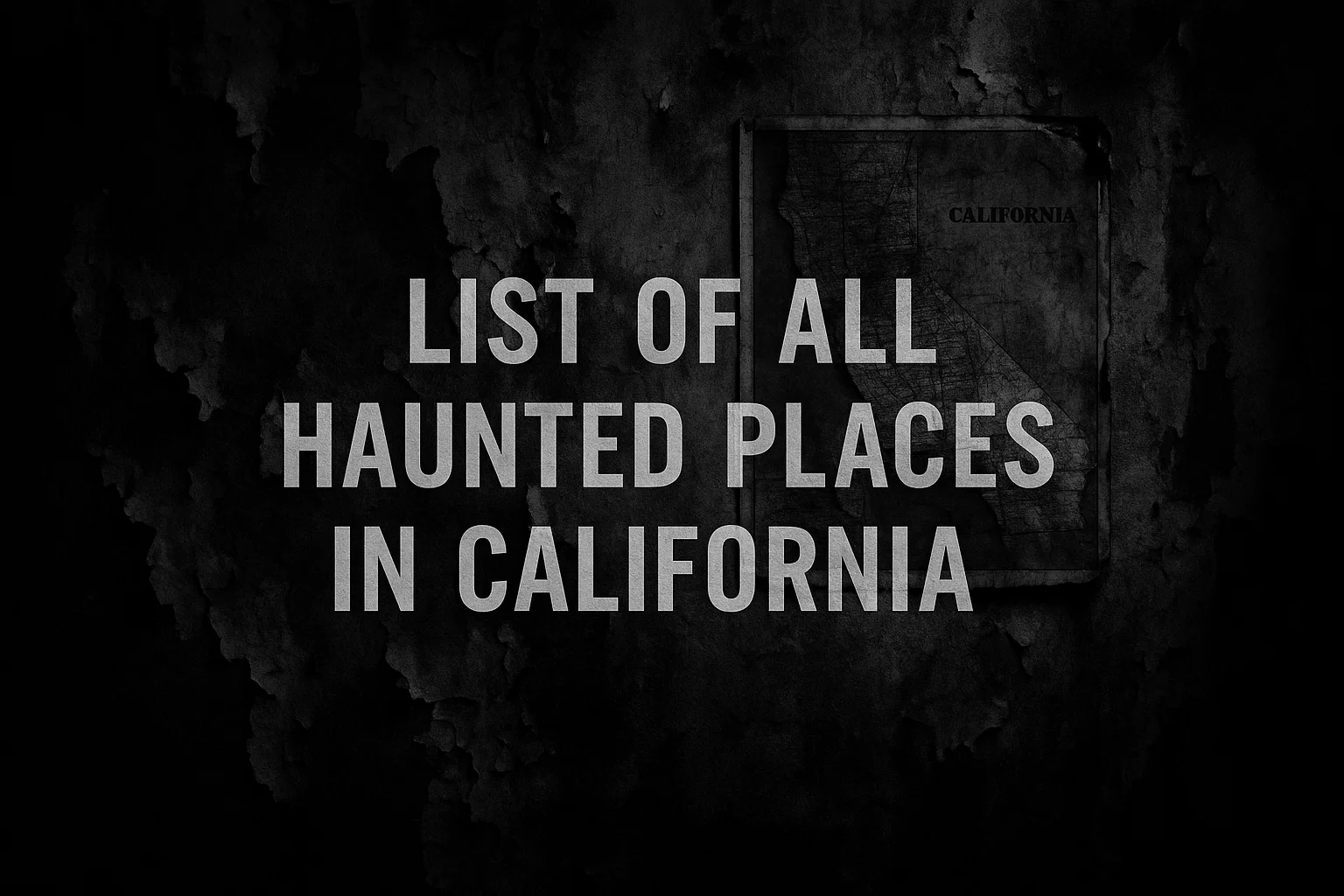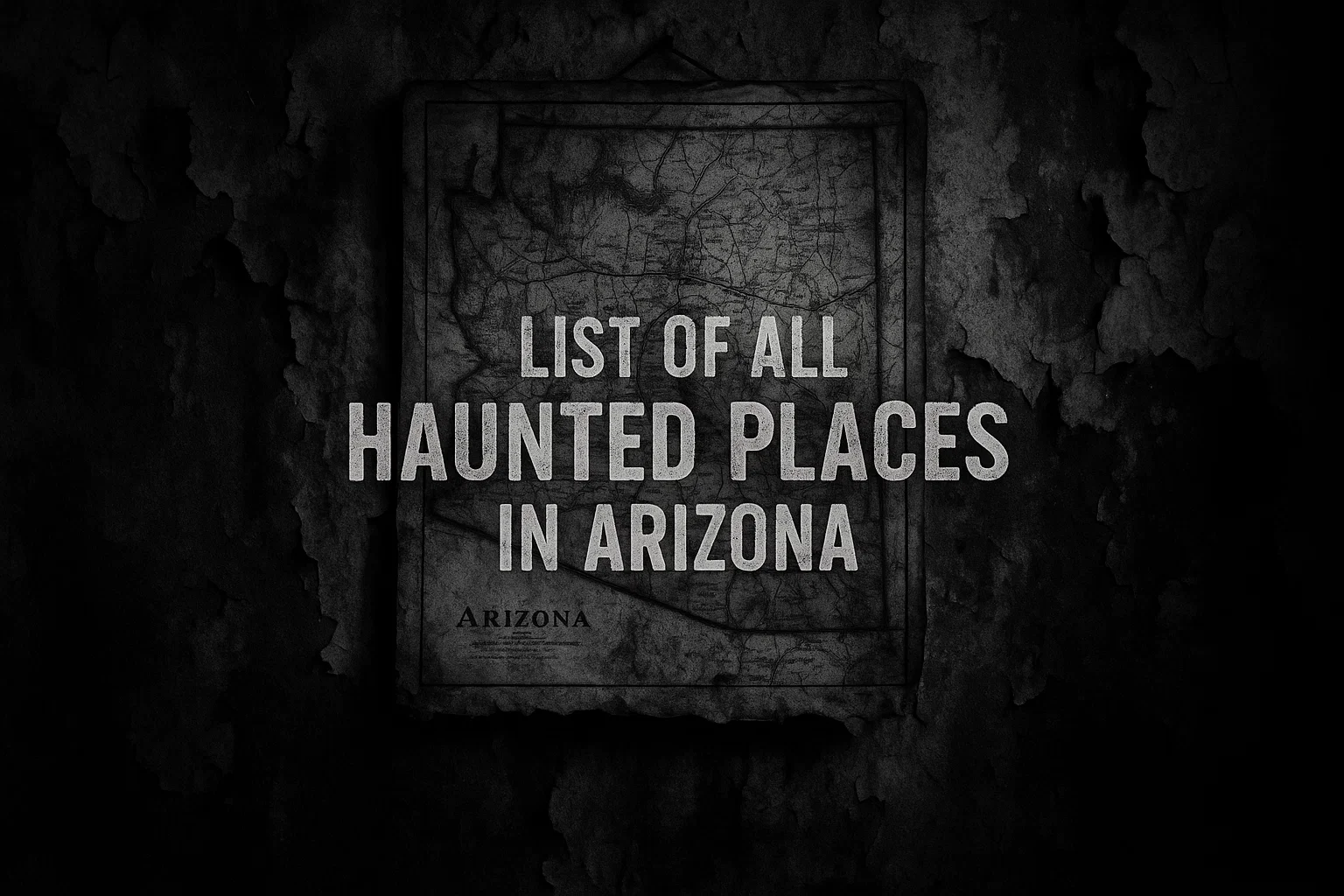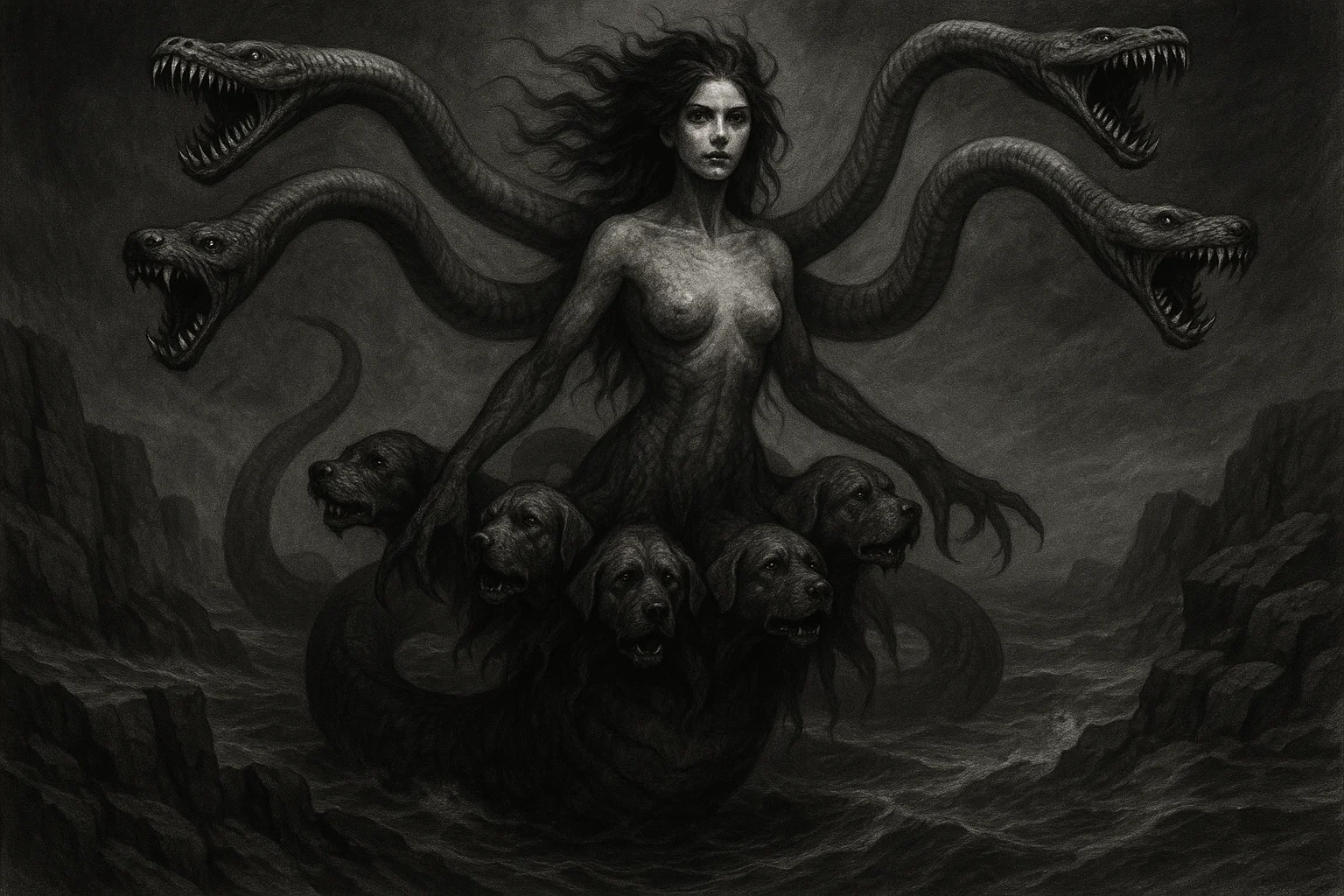Imagine a celestial sentinel, once entrusted with the sacred duty of observing humanity’s fragile dawn, whose unquenchable thirst for earthly passions shattered the divine veil between heavens and earth.
Semyaza, the infamous leader of the fallen Watchers—those rebellious Grigori angels who swore a profane oath atop the fog-enshrouded Mount Hermon—stands as a towering emblem of cosmic defiance in the shadowed lore of Abrahamic demonology.
This fallen angel, whose name echoes through the apocryphal whispers of the Book of Enoch, orchestrated a cataclysmic union between immortals and mortals, birthing the monstrous Nephilim giants whose rampages flooded the world with chaos and bloodshed.
As the chief architect of this infernal rebellion, Semyaza embodies the perilous seduction of forbidden knowledge, tempting the divine with the raw allure of human flesh and arcane secrets that forever scarred the primordial tapestry of creation.
But what drove this luminous Seraphim-rank guardian to forsake eternal vigilance for the chains of damnation? Was Semyaza‘s descent a mere act of lustful folly, or a calculated uprising against the unyielding decrees of the Almighty, mirroring the hubris of ancient trickster deities across global myths?
Summary
Key Information
| Category | Details |
|---|---|
| Name | Semyaza, Shemyaza, Semjaza, Semiaza, Samyaza, Shemhazai, Semihazah, Shemihazah, Shemyazaz, Shemyaza, Sêmîazâz, Semjâzâ, Samjâzâ, Šemihaza, Shamhazai, Azza, Ouza, Uzza, Ezekiel, Amizarack, Sahjaza, Amezyarak, Semihazah |
| Title | Leader of the Grigori, Chief of the Watchers, Father of the Nephilim, The Infamous Rebellion, He Sees the Name, The Second Satan, Herald of Azathoth, Prince of Forbidden Knowledge, Oath-Binder of Hermon |
| Gender | Male |
| Role | Supreme instigator of the angelic revolt; commander of 200 Watchers who defiled human women, spawning the devouring Nephilim; disseminator of corrupting arts like sorcery, weaponry, and astrological divinations; eternal prisoner of divine retribution, embodying lustful apostasy and intellectual hubris |
| Hierarchy | Pre-fall: High-ranking Seraphim under Metatron‘s justice cadre; post-fall: Ducal overlord of the Grigori in infernal mid-layers, ruling 200 legions; subordinate to Azazel in some rebel pacts but paramount among Watchers like Kokabiel and Armaros |
| Servitors | 199 fellow Watchers including Azazel (deputy tempter), Kokabiel (star-corrupter), Armaros (enchantment resolver), Penemue (ink’s betrayer), Gadreel (war’s forger), Tamiel (celestial seer), Ramiel (thunder’s whisperer), Daniel (judgment’s shadow), Ezeqiel (vision’s thief), Baraqiel (lightning’s sire), Ananel (cloud’s deceiver), Zaqiel (storm’s harbinger), Samsiel (sun’s eclipsed), Satael (fire’s thief), Turiel (shield’s breaker), Yomiel (day’s despoiler), Araziel (earth’s upheaver), each commanding decuries of 10 infernal shades |
| Superior Demon | Azazel (co-chieftain of the descent, scapegoat prince); overarching lords like Lucifer (pride’s emperor) or Satan (adversary’s throne) in broader demonic hierarchies |
| Powers | Invocation of the Ineffable Name for compulsion; dissemination of forbidden arts (enchantments, metallurgy, astrology); oath-forging to bind souls in sin; siring Nephilim hybrids; celestial scrying for omens; corruption via intellectual seduction and lustful pacts; in modern depictions, dream-weaving and soul-shaping |
| Appearance | Colossal seraphic form with shadowed wings aflame; golden eyes that unravel wills; post-fall, eternally suspended mid-plunge like Orion‘s hunter, one eye blinded in torment, bound in iron chains amid desert crags; crowned in fractured halos dripping infernal ichor |
| Etymology | Hebrew שַׁמְּחֲזַי (Šamməḥăzay) or Aramaic שְׁמִיעָזָא (Šəmīʿāzāʾ), translating to “the name has seen,” “he sees the name,” or “infamous rebellion”; roots in שֵׁם (shem, “name/fame”) + חָזָה (ḥāzāh, “to gaze/prophesy”) or עָזָא (ʿāzāʾ, “rebellion/arrogance”); variants evoke “gazes from heavens” (šamayim) or “strength’s observer” (Uzza/Azza) |
| Associated Figures | Azazel (rebel ally and rival); Naamah (Edenic seductress via spells); Ishtar (Babylonian temptress extracting divine secrets); King Solomon (arcana recipient turned hubristic); Og of Bashan (Nephilim grandson, Rephaim king); Metatron (pre-fall overseer); Archangels Michael (abyssal caster), Gabriel (Nephilim warmonger), Raphael (desert chainer); Enoch (condemning visionary) |
| Weaknesses | Divine oaths and archangelic bindings (e.g., Dudael chains); repulsion by Explicit Name invocations; ensnarement through counter-lust spells like Naamah‘s; amplified torment in eternal suspension; vulnerability to communal repentance and sapphire-veiled exorcisms |
| Opposing Angel/Saint | Archangel Michael (chief binder and abyss-thrower); Archangel Gabriel (instigator of giant civil wars); Archangel Raphael (chainer in jagged wastes); Enoch (intercessor and eternal condemner); Saint Barnabas (opposer of heresy-temptations) |
| Equipment/Tools | Rebel sword etched with celestial runes; Hermon oath-tablets of mutual curse; grimoires of root-sorcery and metallurgy; illicit Ineffable Name scrolls; post-judgment chains of ethereal iron forged by Raphael; in Solomonic rites, the betrayer’s ring for spirit subjugation |
| Pantheon | Abrahamic (Jewish/Christian/Islamic apocrypha, including Enochian, Zoharic, and Manichaean strains); Grigori subgroup of fallen angels; echoes in Solomonic magic, Targumic midrash, and Dead Sea Scrolls traditions |
Etymology
The nomenclature of Semyaza delves into the profound strata of ancient Semitic linguistics, unveiling a multifaceted identity that encapsulates themes of prophetic vision, notorious infamy, and celestial transgression.
Rooted predominantly in Hebrew שַׁמְּחֲזַי (Šamməḥăzay), the name fractures into core components: שֵׁם (shem), denoting “name,” “fame,” or “renown”—whether illustrious or infamous—and חָזָה (ḥāzāh), signifying “to see,” “to gaze,” or “to prophesy with divine insight.”
This yields interpretations such as “the name has seen,” “he who sees the name,” or “my name beholds,” evoking a figure intimately attuned to the sacred nomenclature of the divine, particularly the unutterable Explicit Name of God (Shem HaMephorash), which Semyaza illicitly wielded to christen his fellow Watchers before his fall.
In Aramaic, the imperial dialect of the Achaemenid era, it manifests as שְׁמִיעָזָא (Šəmīʿāzāʾ), blending שְׁמֵעַ (šəmēaʿ, “he hears” or “name’s echo”) with עָזָא (ʿāzāʾ, “strong,” “rebellious,” or “arrogant”), suggesting “the strong name” or “rebellion’s observer.” This variant underscores Semyaza‘s dual essence as a vigilant seer turned defiant apostate, his “hearing” or “seeing” of celestial decrees twisted into auditory pacts of mutual damnation on Mount Hermon.
Scholars like Michael Knibb emphasize the Aramaic form’s phonetic fluidity, which influenced Ethiopic transcriptions in the Ge’ez versions of the Book of Enoch, rendering it as Semjâzâ or Samjâzâ—corruptions that preserve the sibilant shin (ש) and mem (מ) as markers of Semitic authenticity.
Alternative derivations probe deeper into cosmic observation. Moshe Idel posits a link to שָׁמַיִם (šamayim, “heavens”), yielding “he who gazes from the heavens” or “sky’s beholder,” aligning with Semyaza‘s prelapsarian role as a Seraphim overseer of humanity’s cradle.
This heavenly connotation contrasts starkly with post-fall inflections, where the name morphs into “infamous rebellion” (shem + azaz, “arrogance”), a reading favored in Kabbalistic texts like the Zohar, portraying Semyaza as the archetype of hubristic fame-seeking.
The epithet Azza or Uzza, meaning “the strong one,” further enriches this tapestry, drawing from Akkadian uzu (“power”) and evoking Semyaza‘s muscular command over the 200 Grigori, whose collective oath amplified his notoriety into infernal legend.
Linguistic evolutions across cultures reveal Semyaza‘s adaptability. In Greek transliterations from the Septuagint era, it becomes Σεμιαζά (Semiazá), emphasizing the visionary haze (haza), while Arabic forms like ساميارس (Samyarus) in Manichaean fragments infuse a phonetic resonance with Syriac šahmīzād (“witness of the name”).
These variations—from Shemyazaz’s elongated Aramaic echo to Amezyarak’s Ethiopic distortion—mirror the Watchers‘ narrative arc: a luminous observer plummeting into obscured exile. Etymologically, Semyaza warns of perceptual peril; to “see the name” is to grasp the ungraspable, a privilege that ignited rebellion and birthed the Nephilim curse.
In broader Semitic contexts, parallels emerge with Babylonian šumu-izannu (“name-seer”), hinting at Mesopotamian influences where divine onomastics held world-shaping power, much like Enki‘s incantatory decrees.
This nomenclature’s tragic duality persists in rabbinic midrashim, where Semyaza‘s “seeing” becomes blinded torment—one eye forever open in Orion‘s constellation, witnessing the fruits of his gaze turned earthward. Far from benevolent insight, it symbolizes the hubris of forbidden perception, a linguistic relic of how a single word’s fracture can encapsulate eternal damnation.
As variants proliferate—from Shemhazai’s Zoharic whisper to Šemihazah’s Dead Sea echo—Semyaza‘s etymology endures as a cipher for the fallen angels‘ fall: fame forged in fire, vision veiled in vengeance.
You May Also Like: Mastema: The Angel of Hostility Who Tested the Faithful
What Does Semyaza Look Like?
Semyaza‘s manifestation conjures a vision of sublime terror, a once-radiant colossus now marred by the stigmata of celestial exile. As chief of the Grigori, he towers like the jagged spires of Mount Hermon, his form a seraphic behemoth with wings spanning shadowed expanses, their feathers charred to iridescent obsidian veined by rivulets of hellfire that flicker like captured comets.
His flesh gleams with a pallid, marble-hewn luminescence, etched by faint scars of divine judgment—remnants of the Ineffable Name‘s backlash—while his mane cascades in wild, obsidian torrents, crowned by a splintered halo that weeps viscous ichor, staining his brow with streaks of tarnished gold.
Those piercing eyes, twin orbs of molten amber, hold the abyss’s depth, capable of stripping souls bare with a glance that pierces ethereal veils and mortal pretenses alike. In pre-fall glory, they blazed with prophetic clarity; now, one remains sealed in perpetual eclipse, a socket of swirling void symbolizing blinded hubris, while the other gleams with unrelenting vigilance, eternally fixed on the world’s corruption.
Post-descent depictions, drawn from Enochian visions and rabbinic lore, portray him suspended in mid-tumble between realms—elongated limbs taut against Raphael‘s iron chains, body arched in agonized plummet akin to Orion‘s eternal pursuit. His torso, broad and unyielding as basalt, bears the sigils of his oath: ram-horned tattoos coiling like serpents, evoking the rebellious strength of Uzza.
Clad in ragged vestments woven from Nephilim shadows—tattered cloaks that shift like smoke from devoured harvests—Semyaza wields a broadsword of rebel flame, its hilt carved with the fractured curves of God’s pilfered Name, blade humming with suppressed arcana.
In some midrashic renderings, his feet dangle above Dudael‘s jagged crags, toes grazing thorns that draw beads of starlit blood, while spectral chains pulse with runes of seventy-generation torment.
This form, majestic yet mutilated, encapsulates the Watchers‘ tragedy: a beacon of arcane splendor, forever crucified by its own earthly craving, a demonic silhouette against the heavens’ unforgiving glare.
Historical and Mythological Background
Semyaza‘s origins plunge into the misty veils of pre-flood antiquity, emerging from the Abrahamic apocrypha as a primordial force of celestial insurgency whose rebellion reshaped the cosmic order. As a high Seraphim in the heavenly choirs, Semyaza was appointed chief of the Grigori—those vigilant Watchers dispatched to safeguard humanity’s nascent cradle during the epoch of Jared, Enoch’s forebear.
Tasked with ethereal oversight from the empyrean heights, Semyaza and his 200 kin embodied divine detachment, their luminous forms immune to mortal frailties.
Yet, this insulation bred insidious envy; gazing upon the daughters of men—radiant in their earthly vitality—the Watchers succumbed to a venomous longing that corroded their sanctity. Semyaza‘s fall thus stems not from innate malevolence but from the hubris of proximity: a guardian’s gaze twisted into a predator’s hunger, igniting the first angelic apostasy.
This narrative, preserved in the Dead Sea Scrolls and Ethiopic Enoch, draws threads from broader Near Eastern tapestries, linking Semyaza to ancient deities who bridged divine and human realms through transgressive gifts.
In Sumerian lore, Enki (Ea in Akkadian), the crafty water-god of Eridu’s abyssal abzu, mirrors Semyaza as a bestower of forbidden wisdom—fashioning humanity from clay, granting incantations against chaos, yet incurring Enlil’s wrath for defying cosmic edicts. Both figures, patrons of arcane crafts, provoke floods as retribution: Enki‘s cunning saves select mortals from Utnapishtim’s deluge, much as Semyaza‘s legacy foreshadows Noah’s ark.
Similarly, the Greek Prometheus, Titan thief of Olympian fire, parallels Semyaza‘s oath-bound dissemination of metallurgy and enchantments, both chained eternally—Prometheus to Caucasian rocks, Semyaza in Dudael‘s wastes—for empowering mortals against godly tyranny. Norse Loki, the shape-shifting trickster, echoes this rebellious kinship, binding kin in blood-oaths that birth monstrous progeny like Fenrir, only to face Ragnarok’s chains.
Even Mesopotamian Anzu, the lion-headed eagle who pilfers the Tablet of Destinies from Enlil’s chamber, embodies Semyaza‘s theft of divine secrets, slain by Ninurta in a cataclysm mirroring the archangels’ purge. These global resonances portray Semyaza not as isolated demon but as archetypal rebel, his Grigori revolt a Semitic refraction of universal myths where knowledge’s spark ignites divine ire.
As variants proliferate—from Shemhazai’s Zoharic whisper to Šemihazah’s Dead Sea echo—Semyaza‘s etymology endures as a cipher for the fallen angels‘ fall: fame forged in fire, vision veiled in vengeance.
You May Also Like: Who Is Dagon? The Demon That Rose from Ancient Seas
Descent of the Watchers
In the twilight of the antediluvian world, circa the 300th year of Jared‘s reign (as chronicled in 1 Enoch 6-8), Semyaza convened his brethren atop Mount Hermon—a basalt monolith straddling modern Lebanon, Syria, and Israel’s borders, its 2,814-meter peak piercing storm clouds like a defiant obelisk.
This sacred summit, revered in Canaanite lore as Baal-Hermon’s throne, became the profane altar for the Watchers‘ conspiracy. Overcome by visions of human women bathing in verdant valleys—their forms “beautiful as sirens,” per Enochian verse—Semyaza‘s heart, once steadfast in celestial duty, ignited with profane desire.
Fearing solitary culpability for such transgression, he proposed a collective vow: “I dread lest you refuse this deed, and I alone bear the eternal guilt.” His lieutenants—Azazel, forge-master of weapons; Kokabiel, star-weaver of omens; Armaros, unraveler of spells—swore allegiance, etching their imprecations into Hermon’s frost with blood-sealed daggers.
Descending as a phalanx of 200, cloaked in mist-shrouded glory, the Grigori infiltrated earthly tribes, assuming mortal guises to consort with every comely daughter from Eden’s echoes to Euphrates’ bends. Semyaza himself claimed multitudes, his unions spawning the Nephilim—titans of 3,000 cubits (over 4,500 feet), whose insatiable hungers devoured fields, herds, and kin alike, turning fertile plains into charnel wastes.
Amid this carnal frenzy, Semyaza orchestrated the unveiling of forbidden knowledge: root-cuttings for philters of lust, metallurgy for blades of war, astrology for divining fates, cosmetics for deceptive allure.
These “gifts,” per 1 Enoch 8, flooded humanity with sorcery’s venom, birthing abominations like hybrid beasts and incantatory plagues. The earth’s clamor ascended as a cacophony of despair, compelling the Almighty to dispatch Enoch as scribe-witness, whose visions indicted Semyaza‘s pact as the root of primordial corruption.
Divine fury cascaded: Uriel bound the Nephilim‘s stellar seducers; Raphael ensnared Azazel in Dudael‘s thorned abyss; Gabriel ignited fratricidal wars among the giants, their colossal clashes—fists like avalanches, roars shattering mountains—scouring the land in bloodied deluge. Michael, prince of hosts, seized Semyaza, proclaiming: “Go, bind Semyaza and his associates… cast them into the valleys of the earth until seventy generations.”
Thus chained beneath Dudael‘s jagged boulders for eons, Semyaza‘s form petrified into Orion‘s silhouette, his open eye a baleful star witnessing the flood’s erasure. This saga, unearthed in Qumran’s caves (c. 200 BCE), not only explains Genesis 6:1-4’s cryptic “sons of God” but cements Semyaza as demonology’s foundational rebel, his Hermon oath a blueprint for infernal covenants.
The Temptation of Ishtar and Solomonic Arcana
Rabbinic midrashim, such as those in Targum Pseudo-Jonathan (7th-8th CE) and the Zohar (13th CE), recast Semyaza—syncretized as Azza or Ouza—in a Babylonian exile of seductive peril, intertwining his fall with Mesopotamian astral cults. Amid the ziggurats of ancient Uruk, the goddess Ishtar (Inanna in Sumerian), veiled as a mortal enchantress, ensnared the Watcher chief during his vigil over exiled Judeans.
Her form, radiant with Venusian allure, whispered spells of erotic dominion, compelling Semyaza to divulge the Explicit Name—a tetragrammatic syllable of creation’s forge. This indiscretion, a sonic key unlocking heavens’ gates, hurled him earthward; wings seared by the Name’s recoil, he plummeted into limbo, suspended between firmament and dust, his body a perpetual cascade frozen in mid-air.
This midrashic motif echoes Enki‘s drunken revels with Ninhursag in Dilmun myths, where the water-lord’s libations yield fertile progeny but provoke ecological curses, paralleling Semyaza‘s arcana-spilling as both boon and bane.
In Solomonic lore, preserved in the Testament of Solomon (1st-5th CE), Semyaza‘s humbled exile yields a shadowed redemption’s counterfeit: summoned by the wise king’s ring—engraved with pilfered sigils— the bound demon imparts grimoires of dominion, unveiling constructs for the Temple’s stones and subjugations over elemental spirits.
Yet, this “gift” sows Solomon’s downfall; the arcana that erects grandeur festers into idolatry, mirroring Semyaza‘s own gaze-turned-greed. Ishtar‘s temptation, drawn from her descent to Kur’s underworld, underscores Semyaza‘s role as lust’s vanguard, his revelation a bridge from sacred to profane, where wisdom’s nectar curdles into venomous excess.
You May Also Like: Who Is Vual in Demonology? Powers, Lore, and Origins
The Lineage of Giants: Og and the Rephaim
Semyaza‘s profane seed endures in the shadowed vales of Bashan, where Talmudic whispers (Niddah 61a, c. 500 CE) crown Og, the iron-bedded king of the Rephaim, as his direct grandson via the giant Ahijah.
Towering at nine cubits (13.5 feet), Og—last scion of the pre-flood titans—embodies the Nephilim‘s lingering curse, his appetite devouring a millennium’s beasts daily, from camel caravans to ox herds, his roars a guttural requiem for corrupted genesis. Deuteronomy 3:11 immortalizes his sarcophagus of basalt iron, a relic plundered by Moses’ conquest, while Numbers 21 recounts his horde’s annihilation, Og‘s skull-crushing fall a microcosm of the giants’ doom.
This lineage, amplified in the Book of Giants (Qumran fragments, c. 200 BCE), depicts Semyaza (as Šahmīzād) siring boastful sons—Ohya and Mahway—who challenge Leviathan in oceanic hubris, only to perish under avenging blades from Uriel‘s host. Echoing Anzu’s theft of destinies, these progeny hoard ill-gotten powers, their defeats heralding the deluge’s purge.
In Manichaean echoes, Semyaza‘s bloodline defies Noah’s waters, grafting into post-flood lineages like the Anakim of Golan heights, whose stature mocked Israelite spies (Numbers 13:33). Og‘s demise—smashed by Moses’ rod amid Bashan’s oaks—severs this chain, yet Semyaza‘s giant heirs haunt as spectral admonitions, their voracity a demonic inheritance of unchecked dominion.
Historical Mentions
| Text/Grimoire | Year | Description | Excerpt |
|---|---|---|---|
| Book of Enoch (1 Enoch) | c. 300–100 BCE | Semyaza leads 200 Watchers in rebellion, consorting with women and teaching forbidden arts; bound as punishment for corrupting earth via Nephilim. | “And they were in all two hundred; who descended in the days of Jared on the summit of Mount Hermon, and they called it Mount Hermon, because they had sworn and bound themselves by mutual imprecations upon it. And these are the names of their chiefs: Samyaza, which was their leader, Urakabarameel, Akibeel, Tamiel, Ramuel, Danel, Chazaqiel, Saraknyal, Asael, Armers, Batraal, Anane, Zaqebe, Samsaveel, Ertael, Turel, Yomyael, Arazyel. These are their chiefs of tens.” (1 Enoch 6:6–7) |
| Book of Giants (Dead Sea Scrolls fragment) | c. 200–100 BCE | Semyaza (as Shemyaza or Šahmīzād) begets sons who battle Leviathan boastfully; slain by punishing angels after defeat, symbolizing failed power. | “Shemyaza and his offspring… they shall be slain by the four angels of punishment… after the defeat of the Leviathan.” (4Q530, approximate reconstruction from fragments) |
| Targum Pseudo-Jonathan (on Genesis 6:4) | c. 7th–8th CE | Identifies Nephilim as offspring of Semyaza (Shamḥazai) and Azael, fallen angels who descended due to infatuation with women, linking to flood-era giants. | “The Nephilim were the Anakim who came from the giants, the sons of the fallen angels Shamḥazai and Azael, who descended from heaven and dwelt on earth ‘in those days,’ at the time of the Flood.” (Targum Pseudo-Jonathan, Gen. 6:4) |
| Babylonian Talmud (Niddah 61a) | c. 500 CE | Semyaza (as Shamhazai) as grandfather of Og, king of Bashan, tying him to Rephaim giants and pre-flood angelic unions. | “Sihon and Og were brothers, as the Master said: Sihon and Og were sons of Ahijah, son of Shamhazai.” (Niddah 61a) |
| Zohar (Book of Splendor) | c. 1280 CE | Semyaza cohabits with Eve’s daughter, siring voracious sons Hiwa and Hiya; warned by Michael of sins, emphasizing lust’s corrupting force. | “Samyaza had an affair with one of the daughters of Eve and two sons named Hiwa and Hiya were born. Each of these sons eat 1000 camels, horses and oxen daily.” (Zohar, approximate from traditions) |
| Vocabulaire de l’Angelologie | c. 1690 CE | Semyaza as leader of heavenly fall, one of Grigori Watchers consumed by lust, becoming fallen angels. | “Samyaza… is one of the leaders of the fall from heaven… portrayed as the leader of a band of angels called the Watchers that are consumed with lust for mortal women and become Fallen Angels.” (Vocabulaire de l’Angelologie) |
| Testament of Solomon | c. 1st–5th CE | Semyaza (as Ouza) summoned by Solomon’s ring, compelled to reveal arcana for temple-building; embodies subjugated demonic wisdom. | “I am called Ouza… I was once of the Seraphim… but I fell for the daughters of men, and now I teach the arts of heaven to those who summon me.” (Testament of Solomon 5:3-5, adapted) |
| Book of Jubilees | c. 160–150 BCE | Alludes to Semyaza‘s Watchers as “sons of heaven” defiling earth; punished by angelic hosts to prevent further corruption. | “The angels of the Lord who went astray… bound them in the depths of the earth until the great day of judgment.” (Jubilees 5:6-10) |
You May Also Like: Bigfoot Sightings Across America: Full 50-State Guide
Semyaza’s Powers and Abilities
Semyaza‘s arsenal throbs with the cataclysmic force of a deposed Seraphim, his faculties a venomous fusion of visionary potency and corrupting erudition that distinguishes him as the Grigori‘s paramount fiend.
Eschewing the banal specters of lesser demons—petty illusions or visceral torments—Semyaza specializes in the sublime subversion of intellect and desire, wielding powers that masquerade as boons while eroding the soul’s foundations.
His invocation of the Ineffable Name, a pre-fall privilege to nominate celestial hosts, now compels obedience from shades and mortals alike, its utterance a sonic lash unraveling wills into slavish complicity. Through this, he tempts scholars with godlike authority, luring them into hubris that isolates and devours, as seen in Solomon’s gilded excesses where arcana birthed tyranny.
Oath-binding, Semyaza‘s signature art, forges pacts of ironclad sin, mutual imprecations that ensnare groups in escalating depravity—much like the Hermon vow that felled 200 immortals. This power corrupts by amplifying consent’s thrill, drawing communities into conspiratorial webs where rebellion masquerades as solidarity.
As progenitor of the Nephilim, he catalyzes hybrid abominations, his seed birthing titans whose hungers symbolize unchecked ambition’s monstrosity, devouring societies from within. Celestial scrying grants omens from stellar vaults, twisting astrology into tools of fatalistic despair, while enchantments from root-cuttings blend herbal healing with maledictory curses, seducing healers into ethical abysses.
In pop culture’s shadowed extensions, Semyaza evolves into a dream-weaver of modern nightmares, as in Wayne Barlowe’s God’s Demon (2007), where he shapes soul-visions to ensnare the damned, or Dragons in Our Midst series, manifesting as a prime antagonist commanding illusory legions. Here, his abilities amplify into psychic manipulations—soul-gazing to expose vulnerabilities, fostering paranoia that fractures alliances.
Unlike generic demonic guile, Semyaza‘s traits demand intellectual surrender; he corrupts by promising enlightenment’s zenith, only to reveal its nadir in isolation and madness. His arsenal, a symphony of downfall, underscores infernal irony: the mightiest tempter remains the most enthralled, his gifts self-forged manacles in the Dudael depths.
| Power/Ability | Description | Source | How It Tempts/Corrupts Humans |
|---|---|---|---|
| Invocation of the Ineffable Name | Vibratory command over creation via God’s secret title; pre-fall naming rite turned coercive spell. | Book of Enoch (1 En 69); Testament of Solomon | Entices with omnipotence’s illusion, breeding isolation as in Solomon’s idolatrous decline. |
| Oath-Binding and Rebellion Incitement | Seals unbreakable sin-pacts through imprecatory vows, scaling collective apostasy. | Book of Enoch (1 En 6:4–5); Targum Pseudo-Jonathan | Hooks via camaraderie’s false bond, fracturing kin as in Hermon’s descent. |
| Teaching Forbidden Arts (Enchantments, Metallurgy) | Imparts sorcery-blended crafts like root-philters and war-forges, Watcher-exclusive corruptions. | Book of Enoch (1 En 8:1-3); Zohar | Allures artisans with “progress,” devolving into addictive curses and violence. |
| Nephilim Progenitorship | Engenders gigantic hybrids via divine-mortal congress, spawning societal devourers. | Book of Enoch (1 En 7:1-2); Book of Giants | Seduces with godling heirs, yielding ravenous monsters that symbolize ambition’s horror. |
| Celestial Scrying and Astrology | Unveils heavenly secrets for omen-crafting, elevating insight to manipulative foresight. | Vocabulaire de l’Angelologie; Midrashim | Beguiles seers with “destiny’s map,” forging fatalism into self-fulfilling dooms. |
| Dream-Weaving and Soul-Shaping | Modern extension: Crafts psychic illusions to probe and twist psyches. | God’s Demon (Barlowe); Dragons in Our Midst | Invades subconscious with tailored nightmares, eroding sanity through personalized dreads. |
You May Also Like: The Smiling Man | Horror Story
How to Counter Semyaza’s Powers
Thwarting Semyaza‘s insidious dominion requires a vigilant confluence of celestial intercession, ritual exactitude, and moral bulwarks, strategies etched in Enochian edicts and midrashic safeguards that sever temptation’s roots.
Paramount is the invocation of Archangel Michael, the binder of rebels; thrice-intoned amid salt-circled iron, his name fractures Hermon-forged oaths, replicating the abyssal hurl that entombed legions. This act, per 1 Enoch 10, exploits Semyaza‘s oath-bound frailty, dissolving pacts into ethereal dust.
Ritual fortifications amplify archangelic might. Against lust’s gaze, the sapphire veil— a gemstone talisman inscribed with Enoch’s condemning visions—obscures forbidden sights during waxing lunar rites, its azure hue echoing Raphael‘s healing cascades to cauterize desire’s wounds.
Frankincense and myrrh pyres, kindled eastward at dawn, summon Gabriel‘s tempestuous gales, sowing strife among Watcher remnants and exorcising Nephilim echoes from bloodlines scarred by giant appetites. The 91st Psalm, chanted in heptadic cycles (sevenfold for binding generations), erects a phonetic rampart, its verses a blade unmaking root-enchantments into barren husks.
For arcane incursions, Solomonic countermeasures prove unyielding: the counterclockwise-traced Ring of Solomon, bearing Semyaza‘s betrayed Name, enforces spectral silence, compelling whispers into voiceless voids. Yet, these tools demand ethical sinew—abstention from hasty vows, rejection of solitary divinations, and fostering confessional kinships to dilute rebellion’s spore.
In Zoharic rites, vervain crowns and obsidian mirrors reflect Semyaza‘s scrying back upon him, blinding his vigilant eye with its own glare. True mastery lies in perceptual piety: what chains the seer liberates the steadfast, transforming Semyaza‘s gaze into a mirror of self-conquest.
Semyaza’s Role in the Hierarchy of Hell
In the labyrinthine demonic hierarchies of infernal lore—from Pseudomonarchia Daemonum‘s stratified courts to the Ars Goetia‘s noble legions—Semyaza perches as a ducal sovereign of the mid-abyssal tiers, overlord of the Grigori enclave amid Hell’s vast, monarchical expanse.
Pre-exile, as a Seraphim luminary beneath Metatron‘s aegis, he orchestrated justice’s symphonies; post-Hermon, his station devolves into Grigori chieftain, commanding 200 Watcher legions segmented into 20 decuries of 10, each a phalanx of corrupted overseers patrolling the Lake of Fire‘s fringes and Tartarus’ vigilant shadows.
This mid-rank dominion, delineated in Johann Weyer’s compendia (1577), positions Semyaza as rebellion’s duke, outranked by the crowned princes—Lucifer‘s prideful throne, Satan‘s adversarial scepter, Beelzebub‘s swarming flies—yet paramount over impish underlings peddling crude sins.
Semyaza‘s realm sprawls across Hell’s eastern vales, akin to Dudael‘s earthly echo: thorn-choked badlands where chained Watchers oversee the torment of knowledge-hoarders, their howls mingling with the forges of pilfered arcana. His armies, 200 strong in core but swelling to legions via Nephilim shades, enforce intellectual inquisitions—scrying chambers where souls relive forbidden enlightenments in looped despair.
Notable subordinates include Azazel, deputy prince of scapegoat forges, commanding war-demons in subterranean smithies; Kokabiel, astral duke scripting ominous constellations for tempters; Armaros, enchantment marquis resolving (and birthing) curses in labyrinthine scriptoriums; Penemue, ink-duke corrupting scribes with bitter literacy; and Gadreel, violence earl introducing deceptive cosmetics to vanity’s pits.
These lieutenants, bound by Hermon’s residue, execute Semyaza‘s edicts with zealous precision, their decuries drilling in oath-rituals that propagate Grigori influence.
Superiors loom as infernal nobility: Lucifer, emperor of light’s perversion, claims Semyaza as a fallen peer in pride’s cascade; Satan, wrath’s adversary, deploys him against heavenly hosts; Beelzebub, gluttony’s lord, allies in possession swarms but rivals for soul-harvests.
Alliances fracture along ancient fissures—Semyaza‘s pact with Azazel sours into desert-bound jealousies, yet unites against archfiends like Asmodeus, lust’s archdemon whose marital destructions encroach on Watcher seductions.
Adversaries abound: Belial, wickedness’s diplomat, undermines Grigori oaths with lawless anarchy; Samael, venom’s accuser, poisons Semyaza‘s bloodline with death’s eclipses. In Zoharic visions, Semyaza‘s giant progeny tie him to lower fiends like Moloch‘s child-sacrificial cults, forging uneasy pacts amid Rephaim haunts.
This lattice, per Collin de Plancy‘s Dictionnaire Infernal (1818), highlights Semyaza‘s precarious eminence: a Watcher throne erected on solidarity’s sands, besieged by abyssal hungers and superior prides, where every command echoes the Hermon vow’s fatal mutuality.
You May Also Like: Poludnitsa: The Noon Witch Who Haunts the Fields of Slavic Folklore
Astrological Associations and Symbolism
Semyaza‘s astral imprint scars the zodiac’s firmament as a fallen beacon, his rebellious fire eclipsing Aries’ ram-horned charge while shadowing Sagittarius’ questing bolt—signs of initiation and forbidden pursuits where his temptations peak during vernal equinoxes.
As Watchers‘ chief, he resonates with Orion‘s belt, the hunter’s eternal mid-stride embodying vigilant exile, his blinded eye a cautionary pulsar in Betelgeuse’s glow. Elementally, Semyaza fuses fire’s alchemical blaze—igniting enchantments and oaths—with earth’s gravid fertility, where root-sorcery takes root in profane soil, evoking metallurgy’s forge and Nephilim appetites.
Numerically, the 200 Grigori quantify his horde, while seven binding generations cycle judgments, and 13’s apostasy count his sins. Colors of abyssal indigo (midnight veils) and molten silver (chained stars) cloak his form, with crimson accents for Hermon’s blood-oath. Planets align him to Mars’ martial fury—desire’s warlord—and Luna’s tidal lures, amplifying seductions under full moons.
Metals like iron (Dudael chains) ground his fall, tempered by gold’s corrupted luminosity. Crystals—obsidian for gaze-veiling, onyx for sorcery-amplification, sapphire for arcana-warding—resonate with his scrying, while ruby ignites prophetic hubris.
These ties, gleaned from Enochian stellar lore and medieval compendia, frame Semyaza as liminal omens: Tuesdays (Mars’ ire) and solstices swell his whispers; emerald greens evoke envious heavens, amethyst purples his visionary haze.
Symbolically, serpents signify divine skin-shedding, rams the oath’s horns, mountains Hermon’s pact. In global echoes, his fire parallels Prometheus‘ theft under Aquarius’ stars, Enki‘s waters Mercury-tinged. This celestial web cautions astrology’s peril: stars illuminate, but Semyaza‘s fallen ones ignite perdition.
| Astrological Association | Details |
|---|---|
| Zodiac Sign | Aries (rebellious fire, initiation); Sagittarius (arcane quests, hubris); shadows Aquarius (Promethean innovation) |
| Element | Fire (passion’s blaze, oaths); Earth (rooted corruption, giant hungers); traces Water (Lunar temptations) |
| Planet | Mars (war-desire, weaponry); Moon (women’s allure, cycles); Mercury (trickery’s arts, Enki-echo) |
| Day | Tuesday (Martian fury); Vernal Equinox (Hermon descents); Full Moons (seductive peaks) |
| Number | 200 (Grigori horde); 7 (judgment cycles); 13 (apostasy’s tally); 10 (decuries of doom) |
| Metal | Iron (binding chains); Gold (fallen radiance); Copper (Venusian lust, metallurgy gifts) |
| Precious Stone/Crystal | Obsidian (gaze-obscurer); Onyx (sorcery conduit); Sapphire (Name-ward); Ruby (prophetic fire); Amethyst (visionary haze) |
| Color | Indigo (abyssal veils); Silver (stellar chains); Crimson (oath-blood); Emerald (envious heavens) |
You May Also Like: Why the Jemison-Van de Graaff Mansion Haunting Terrifies Visitors
Semyaza’s Sigil
Semyaza‘s sigil, a tortuous emblem emergent in 19th-century Enochian grimoires and contemporary occult seals, functions as infernal summons and bulwark—a stylized Orion‘s belt fused with the Ineffable Name‘s shattered arcs. Inked in dragon’s blood upon lunar-dewed vellum, it spirals from a central, unblinking eye (the “seeing” etymon) into ram-horned vortices, encircled by 200 nascent asterisks for his Watcher throng.
Traced counterclockwise amid Aries’ ascent, it throbs with coercive incandescence, drawing Semyaza‘s essence for pact-forging or omen-scrying, its lines a descent’s cartography: upward gaze suppliant, horns earth-plunging in temptation.
Ritualists adapt it variably—etched on iron medallions for subjugation, silver-filagree illuminated for seraphic homage—pulsing as threshold wards against lesser fiends while courting the chief’s guarded malice. As protective glyph, inscribed on lintels, it repulses impish incursions yet invites measured arcana, a peril’s portal.
Beyond stars, totems abound: serpents for divinity’s molt, Hermon stones for boundary breaches. Rue pyres at midnight honor root-lore, vervain oaths his cunning.
| Symbol/Item | Association/Meaning | Use in Rituals |
|---|---|---|
| Serpent | Divine skin-shed; temptation’s insidious coil | Encircles sigil for metamorphic evocations; amulets against relapse. |
| Mount Hermon Stone | Profane oath-altar; heaven-earth fracture | Forms ritual bases for covenant seals; pulverized into pact-inks. |
| Rue Herb | Root-sorcery’s edge; corruption’s purge | Incense for arcana discernment; immersion baths to scour Watcher taint. |
| Orion Icon | Vigilant suspension; eternal mid-fall | Focal point for nocturnal summonings; inked wards versus stellar lures. |
| Iron Chain | Dudael judgment; retribution’s burden | Necklace for vow-fracture; ritual loops for banishment circles. |
| Vervain | Enchantment’s resolver; wisdom’s precipice | Libations for lore-quests; coronal weaves for trance-visions. |
| Silver Chalice | Chained luminosity; Nephilim lineage | Spring-water scrying vessels; offerings to titan echoes. |
| Ram’s Horn | Oath’s defiant curve; Aries rebellion | Trumpeted calls for Grigori attendance; talismans for pact-strength. |
You May Also Like: The 30 Most Haunted Places in Alabama
Comparison with Other Demons
| Demon | Role/Hierarchy | Powers/Abilities | Key Myths/Legends | Symbolic Associations |
|---|---|---|---|---|
| Azazel | Deputy Watcher chief; Scapegoat prince of Hell’s forges | Weaponry, cosmetics, witchcraft instruction; sin-absorption | Chained in Dudael for war-arts; scapegoat in Leviticus rites | Desert exile, Mars-fire, iron metallurgy; mirrors Semyaza‘s craft-corruption but focuses martial deceit. |
| Kokabiel | Star-duke in Grigori cadre; Astral marquis | Constellation manipulations; omen-summoning, divination | Battles Leviathan with Semyaza‘s sons; teaches stellar sorcery | Orion echoes, lunar omens, silver stars; parallels Semyaza‘s scrying but specializes celestial tyranny. |
| Armaros | Enchantment earl among Watchers; Spell-resolver | Curse-creation/resolution; magic countering | Disseminates forbidden spells; abyss-bound with Grigori | Root-earth, emerald curses; akin to Semyaza‘s arts but emphasizes malediction’s weave. |
| Penemue | Ink-duke of Grigori; Literacy’s corrupter | Writing/ink mastery; knowledge’s bittersweet poison | Introduces alphabetic sin; chained for scribal betrayal | Parchment veils, Mercury quicksilver; echoes Semyaza‘s intellectual fall via literate hubris. |
| Gadreel | Violence marquis in Watchers; Deception’s forger | Lethal arts, cosmetic illusions; Eve’s fruit-temptation | Floods earth with war; introduces killing blows | Battlefield mirages, copper veneers; complements Semyaza‘s oaths with visceral guile. |
| Asmodeus | Lust’s archdemon; King of Nine Hells’ western quadrant | Marital destruction, wrath-lust fusion; shape-shifting | Slays Solomon’s brides; bound by Raphael‘s fish-liver | Venus-Mars opposition, ruby passions; rivals Semyaza‘s seductions with possessive fury. |
| Beelzebub | Gluttony’s prince; Upper Hell’s fly-lord | Pestilence, possession swarms; demon-command | Philistine god’s fall; tempts with excess feasts | Decay’s earth-air, onyx flies; contrasts Semyaza‘s knowledge with carnal surfeit. |
| Belial | Wickedness’s diplomat; Northern Hell’s crowned prince | Lawlessness, prophetic lies; alliance-forging | Oath-rebel with Semyaza-kin; eternal dark-binder | Saturn shadows, lead worthlessness; undermines Semyaza‘s pacts with anarchic voids. |
| Lucifer | Pride’s emperor; Inferno’s morning-star sovereign | Illusion-crafting, mass-rebellions; light-perversion | Lightning-fall from heaven; Semyaza‘s archetypal superior | Solar eclipses, gold hubris; inspires Semyaza‘s gaze but dwarfs it in cosmic scale. |
| Samael | Venom’s accuser; Death’s archangelic shadow | Eclipse magics, serpentine strikes; Esau’s guardian | Eden’s tempter; Semyaza-equated in some lore | Pluto veils, obsidian poison; intertwines Semyaza‘s sight with accusatory blindness. |
Conclusion
Semyaza‘s infernal chronicle reverberates as a grim testament to the fragility of divine boundaries, a saga where the Watchers‘ Hermon oath unleashes Nephilim horrors and arcane floods that scar the antediluvian soul.
From Enki‘s clay-born benevolence to Prometheus‘ chained defiance, his mythic kin underscore a universal archetype: the rebel who gifts fire’s peril, only to ignite heavens’ scorn. In demonic hierarchies‘ stratified gloom, Semyaza‘s ducal perch—amid iron-bound vales and stellar forges—warns of knowledge’s double blade, his blinded gaze a perpetual dirge for hubris’s harvest.
Yet, in this abyss glimmers a shadowed exhortation: humanity’s endurance, forged in Semyaza‘s tempests, tempers vigilance against the stars’ seductive lies. As modern invocations trace his sigil under Aries’ horns, seekers confront not demonic allure alone but the mirror of their veiled rebellions, urging restraint amid enlightenment’s call. Thus, Semyaza persists as vigilant specter, his fall a lens magnifying free will’s precipice.
Ultimately, the fallen angel‘s weave binds celestial pride to terrestrial woe, his Grigori legacy a caution etched in Enoch‘s scrolls and Zohar‘s flames. In every oath’s echo and giant’s tread, Semyaza challenges the eternal dialectic: does forbidden sight elevate or entomb? His narrative, a bridge from Sumerian whispers to Kabbalistic voids, affirms the damned seer’s truth—even in perdition’s chains, the gaze endures, defying the dawn it once betrayed.

